Photo

We haven’t posted on tumblr in a while - but we wanted to let you know that after four years, Skunk Bear is ending. Thanks for coming along this curious journey with us and sharing our dancing scientist gifs!
You can still find all our videos at youtube.com/skunkbear.
And keep your ears pricked and eyes peeled for more fascinating content from NPR’s science desk (www.npr.org/science).
Cheers,
Adam & Ryan
236 notes
·
View notes
Photo
Did you know that popcorn was the first type of corn domesticated by humans? Or that the starch within popcorn is liquefied before it pops? This video explores the history and science of popcorn - just in time for the Oscars!
youtube

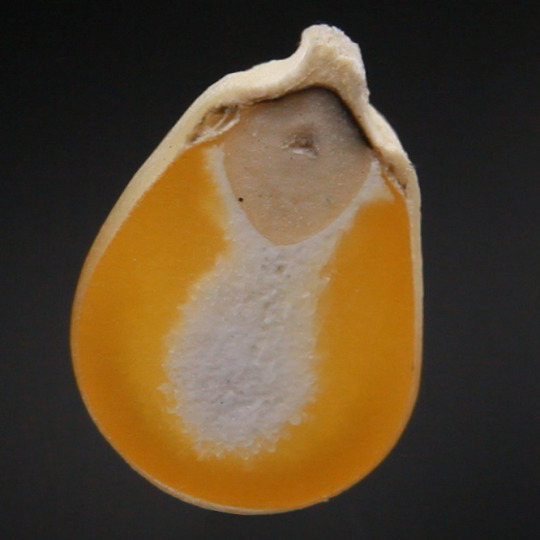


3K notes
·
View notes
Photo
Some great #ScienceValentines from years past - and here’s a new one: Our latest episode is a song that explores the science of love.
youtube










51K notes
·
View notes
Photo



150 years ago today, Charles Darwin published a puzzle - why do some dogs have droopy ears when the ears of wolves stand upright? Why is this pattern seen across many tame species? What exactly does tameness have to do with ear cartilage? Now we’re getting close to an answer that ties it all together. A fascinating hypothesis explains dogs’ floppy ears, and their spotted coats and shortened faces along the way.
Our new animated episode explains it all!:
youtube
#skunk bear video#domestication#dogs#neural crest cell#domestication syndrome#darwin#the variation of animals and plants under domestication
4K notes
·
View notes
Photo
We turned this post into a video!
youtube
Tumblr Images: Charles D. Winters, Andrew Lambert Photography / Science Source, iStockphoto, Epic Fireworks, Softyx, Mark Schellhase, Walkerma, Firetwister, Rob Lavinsky, iRocks.com, Søren Wedel Nielsen








27K notes
·
View notes
Photo










Check out the video!
youtube
1K notes
·
View notes
Photo





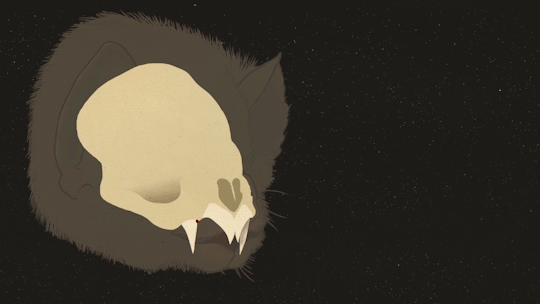




What do you know about vampire bats? There’s more to them than the blood drinking; they have super powers and human-like friendships. Watch this fascinating species (and learn about the effort to exterminate them) in our premiere episode of season 2 of “Good Question.”
youtube
12K notes
·
View notes
Photo






In April, Skunk Bear traveled to a tiny town along the banks of the Panama Canal to learn a little bit about bats. We caught some wild bats in super fine mist nets, fed them sugar water, and visited the trees, caves and abandoned bunkers where they roost.
While most bats play important roles in the jungle, there is one species that causes real problems and doesn’t seem to add much to the ecosystem: the common vampire bat. They spread the deadly rabies virus to livestock and people. That raises the question - should we drive this problematic species to extinction?
Check out our video about this dilemma here:
youtube
395 notes
·
View notes
Photo


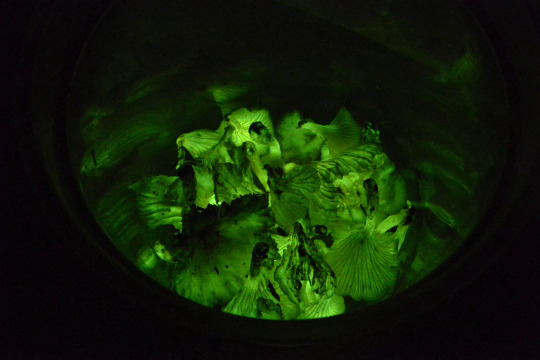
If you were to walk at night through certain forests around the world, you might notice a mushroom glowing green. There are about 80 species of bioluminescent fungi around the globe. Scientists studying two of those species native to Brazil and Vietnam write in the journal Science Advances that they now know the exact chemical reaction that allows fungi to emit light. Turns out, it’s a lot like fireflies.
The chemical reaction involves an enzyme called luciferase (which, depending on how poetic you want to get, can be interpreted as “devil-maker,” or “maker of the light-bringer” or, most accurately, “enzyme that helps a compound called ‘luciferin’ do stuff”).
The enzyme helps luciferin gain oxygen molecules, which excites it. Once it’s excited, luciferin will release light as it returns to its usual, non-excited state. The green light it releases is called “cold light” because there’s almost no heat involved.
There are a lot of different types of luciferin. The one used by these mushrooms, identified in 2015, is different from the others identified in plants and animals. In the lab, the scientists found that the enzyme used by fungi to produce light can be used to make all sorts of colors, not just green.
Fun fact: It’s thought that reactions like these originally came about to get rid of extra, unattached oxygen molecules -- in the same way that blueberries are sold as “antioxidants” to help human bodies get rid of free radicals, aka free-floating oxygen atoms.
- Rae Ellen Bichell
Image source: Cassius V. Stevani/IQ-USP, Brazil, Science Advances
1K notes
·
View notes
Text
Wash those hands!
How To Prepare For A Pandemic: 3 Steps
If we believe that an unknown pandemic is overdue, what precautions are reasonable to take now? We turned to four infectious disease experts for answers.

✔ Vaccines
To maximize your protection from a new disease, make sure you and your family are up to date on vaccines for known diseases, from the flu and pneumonia to shingles and whooping cough.
✔ Virus knowledge
One of your best weapons during a disease outbreak is knowledge, says Dr. Jonathan Temte of the University of Wisconsin. "Keep up with the news and try to understand what threats might be out there,“ he says.
✔ Very clean hands
The CDC calls hand-washing the "do-it-yourself vaccine.” And all the experts repeated the recommendation: Learn how to clean your hands properly and do it.
Read the full story here
700 notes
·
View notes
Photo

Albert Einstein (whose birthday we celebrate today) once said:
“I have no special talent. I am only passionately curious.”
What are you curious about? Is there’s something you’ve always wanted to know? Or a question that just popped into your head? We pledge to use science (and animation, and art, and music) to answer it. Skunk Bear is looking for Good Questions to guide our next series of videos. Submit here: npr.org/skunkbear.
And please reblog so your friends can ask their questions, too!
386 notes
·
View notes
Photo
Happy Pi Day everyone! Got questions about math (or anything sciencey)? Send them our way: npr.org/skunkbear.


It’s Pi Day tomorrow! A very special Pi Day, because on March 14, 2015, at 53 seconds past 9:26 AM the date and time will spell out the first 9 decimal digits of the constant π. I’ll be celebrating by eating pie.
This GIF is a visual representation of C = 2r*π (the relationship between the circumference and the diameter).
*These smart folks have pretty much convinced me that Tau (τ=2π=6.2831…) is actually a better constant. And on Tau Day (June 28th), I get to eat TWO pies. But we have to wait until 2031 to get those extra decimal digits for τ.
19K notes
·
View notes
Photo
Happy International Women’s Day! Check out more great scientist portraits over on @rachelignotofsky‘s tumblr!

@maejemison fist black woman in space and principle of the 100 Year Starship Project. #WomeninScienceBook #scientificliteracy #happyblackhistorymonth #blackhistoryshouldbecelebratedallyearlong
661 notes
·
View notes
Photo




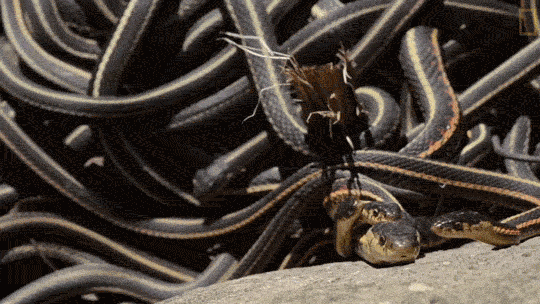


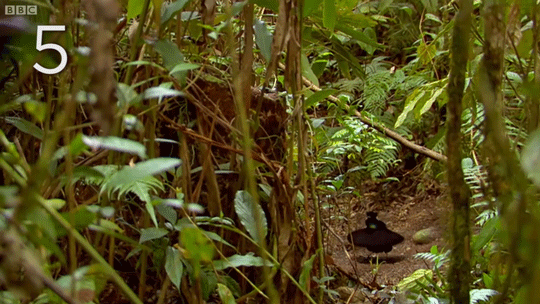


1. Slimy Sweethearts
Hermaphroditic leopard slugs dangle from strings of mucus, extend their slimy, blue penises from their foreheads, and twist them together in the moonlight to fertilize each other’s eggs.
(Image Credit: Unireality/BBC Earth)
2. Hers and Hiss
Red-sided garter snakes are some of the world’s snuggliest beings. Each spring, thousands upon thousands of garter snakes emerge from underground caves and crevices in Manitoba to look for a mate. Females are engulfed by a wriggling mass of amorous males.
(Image Credit: National Geographic)
3. A Small Token Of His Affection
Packs of honeybees swarm their queen in mid-air. When a lucky suitor finds his mark, he instantly ejaculates, literally causing his tiny bee gonads to explode. The queen buzzes away from her (now deceased) mate, carrying a parting gift – the dead male’s penis. It stays inside her, barring other would-be fathers. (Image Credit: The Guardian/Eureka Entertainment)
4. From The Bottom Of My … Bottom
To communicate he’s looking for love, a male hippo urinates and defecates at the same time while aggressively whipping his tail around to spread the scent. A reciprocating female will even respond with some poo wafting of her own.
(Image Credit: Earth Touch)
5. Birds of Paramour
Mother Nature isn’t all excrement sprinklers and exploding gonads – birds of paradise impress their mates with the power of dance. The male parotia expands his plumage into a tutu-like arrangement of feathers and performs, hoping the chicks will dig it.
(Image Credit: BBC Earth)
6. No partner? No problem.
The aphid is living proof. Female aphids can have babies without the help of a male, just by cloning their genes and giving birth to exact miniature copies of themselves.
(Image Credit: BBC Worldwide)
Text by Jessica Boddy, GIFs by Ryan Eskalis
2K notes
·
View notes
Photo

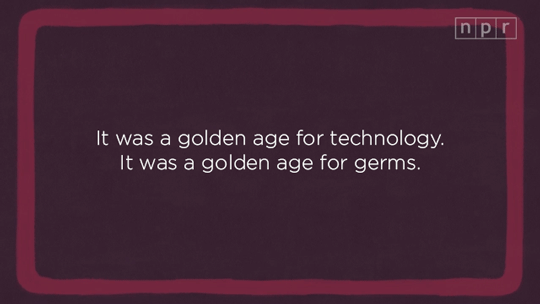


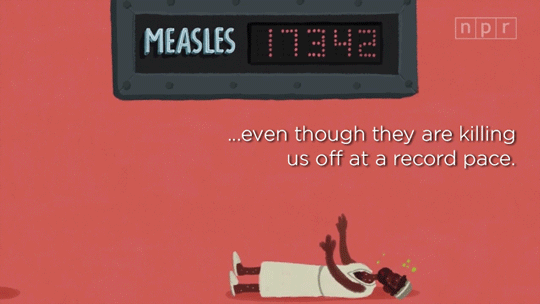


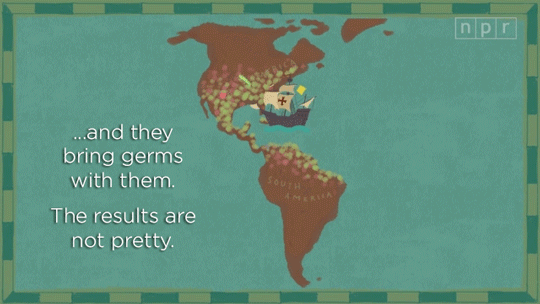
Here’s part two of NPR’s salute to the history of human disease (part of their pandemic series).
youtube
Check out part one here.
947 notes
·
View notes
Photo
Another side effect of humanity’s conquest of the natural world.

What new viruses are emerging in your backyard?
If you’re a germaphobe, make sure you’re sitting down.
Back in 1999, a woman in California cleaned up rodent droppings in her home. Two weeks later, her liver started failing. Then she started to bleed internally — a hemorrhagic fever that would kill her. Eventually doctors found a new virus in her body, which very likely came from a rat.
A few years later, a man in Arizona went to the hospital. The skin on his legs was infected and dying. Doctors had to amputate. His diagnosis? A new kind of leprosy.
Over in the Midwest, the problem has been new tick-borne diseases, some deadly. And in New England, doctors are dealing with a disease that causes Lyme-like symptoms but is caused by a different bacteria.
The pattern continues across the country and across the world. A spike in new infectious diseases is the new normal.
697 notes
·
View notes
